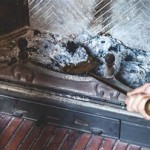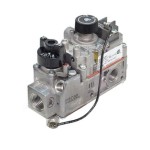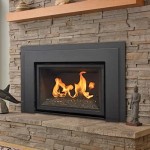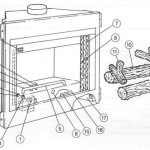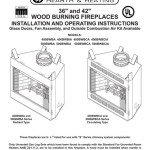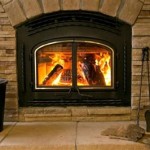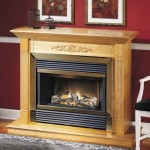Vintage Fireplace Bellows: A Comprehensive Guide
Vintage fireplace bellows are more than just functional tools for stoking a fire; they are artifacts that offer a glimpse into the past. Their construction, materials, and designs reflect the craftsmanship and aesthetic sensibilities of different eras. Understanding these features can provide valuable insights into the history, purpose, and value of these increasingly sought-after objects.
The primary purpose of a fireplace bellows, both historically and today, remains the same: to direct a concentrated stream of air to ignite or revive a fire. However, their role has evolved beyond mere utility. A vintage fireplace bellows now often serves as a decorative element, adding a touch of rustic charm and historical authenticity to a home's interior. Collectors and enthusiasts appreciate these objects for their unique designs, materials, and the stories they represent.
Understanding the Components of a Vintage Fireplace Bellows
A typical fireplace bellows consists of several key components, each contributing to its overall functionality and aesthetic appeal. Examining these parts allows for a better understanding of the bellows' construction and helps in identifying its age and origin.
The first component is the nozzle, often made of metal, typically brass or iron. This nozzle focuses the airflow, directing it precisely onto the embers. The design of the nozzle can vary; some are simple, straight tubes, while others are more ornate, featuring decorative elements or flared openings. The material and design of the nozzle can be indicative of the bellows' age and manufacturing techniques.
The second crucial component is the body of the bellows, typically constructed from wood and leather. The wooden frame provides structural support, while the leather forms the expandable air chamber. The type of wood used, its finish, and the joinery techniques employed can provide clues about the bellows' origin and the skill of the craftsman. Common woods used include pine, oak, and mahogany, each lending different characteristics to the finished product.
The leather component is equally important. It must be flexible enough to expand and contract easily but also durable enough to withstand repeated use. Different types of leather, such as goatskin, sheepskin, or calfskin, may have been used, each with varying degrees of thickness, texture, and durability. The quality and condition of the leather are critical factors in assessing the overall condition and value of the bellows.
The third important component is the handle. Typically also made of wood, the handle allows the user to operate the bellows. The handle's shape, size, and attachment method can vary considerably. Some handles are simple, cylindrical pieces of wood, while others are more elaborately carved or shaped for ergonomic comfort. The attachment method, such as being directly glued, pinned or dovetailed into the wood body of the bellows, can also provide insight into its construction and age.
Finally, decorative elements frequently adorn vintage fireplace bellows. These can range from simple carvings and embossed leather to more elaborate painted designs and metal embellishments. These decorative features not only enhance the bellows' aesthetic appeal but also provide information about the artistic trends and cultural influences of the time.
Identifying the Age and Origin of Vintage Fireplace Bellows
Determining the age and origin of a vintage fireplace bellows requires careful observation and, if possible, some historical knowledge. Several clues can help in this process, including the materials used, the construction techniques, and the design elements.
Examining the materials used in the bellows' construction is a good starting point. The type of wood, the quality of the leather, and the presence of specific metals can indicate the bellows' age and geographical origin. For example, bellows made with certain types of exotic hardwoods might suggest a specific time period or location where those materials were readily available. Similarly, the use of hand-forged iron nozzles might indicate an older bellows compared to one with a mass-produced brass nozzle.
Construction techniques also offer valuable clues. Hand-cut dovetail joints, hand-stitched leather, and hand-carved decorations typically indicate an older, more artisanal construction. Conversely, the presence of machine-made parts, such as stamped metal components or perfectly uniform stitch lines, suggests a more modern manufacturing process. The presence of patent markings or maker's marks can also provide direct evidence of the bellows' origin and age.
Design elements play a crucial role in dating and identifying the origin of vintage bellows. The style of the carvings, the patterns in the leather, and the overall shape of the bellows can reflect the aesthetic trends of different periods and regions. Researching historical design trends and comparing them to the bellows' features can help narrow down its age and origin. For example, bellows from the Victorian era might feature elaborate floral carvings, while those from the Art Deco period might have more geometric and stylized designs.
Finally, consulting with experts and researching historical records can be invaluable in identifying the age and origin of vintage fireplace bellows. Antique dealers, appraisers, and museum curators can offer their expertise based on their knowledge and experience. Historical catalogs, advertisements, and trade publications can provide further information about the types of bellows that were manufactured and sold during different periods.
Caring for and Preserving Vintage Fireplace Bellows
Proper care and preservation are essential for maintaining the condition and value of vintage fireplace bellows. These delicate objects are susceptible to damage from environmental factors and improper handling. Implementing appropriate preservation strategies can help ensure that these historical artifacts survive for future generations.
One of the primary concerns is the impact of environmental conditions. Fluctuations in temperature and humidity can cause the wood and leather components to expand and contract, leading to cracks, warping, and deterioration. To mitigate these effects, it is best to store vintage fireplace bellows in a stable environment with moderate temperature and humidity levels. Avoid exposing them to direct sunlight, extreme heat, or excessive moisture.
Regular cleaning is also crucial for preserving the condition of vintage bellows. Dust and dirt can accumulate on the surface, causing discoloration and abrasion. Use a soft, dry cloth to gently wipe the bellows, removing any loose debris. Avoid using harsh chemicals or abrasive cleaners, as these can damage the finish and the underlying materials. For stubborn dirt or stains, consult with a professional conservator for advice on appropriate cleaning methods.
The leather component requires special attention. Leather can dry out and become brittle over time, leading to cracks and tears. To prevent this, periodically apply a leather conditioner specifically designed for antique leather goods. Follow the manufacturer's instructions carefully, and avoid over-conditioning the leather, as this can make it sticky and attract dirt. Store the bellows in a way that prevents the leather from being stretched or creased.
Structural repairs should be undertaken only by qualified professionals. Attempting to repair cracked wood, torn leather, or loose joints without the necessary expertise can cause further damage. A professional conservator can assess the condition of the bellows and recommend appropriate repair methods that preserve its historical integrity.
Finally, handle vintage fireplace bellows with care. Avoid dropping them, bumping them, or subjecting them to excessive stress. When displaying the bellows, choose a location where they are protected from accidental damage. Educate those who handle the bellows about the importance of proper care and preservation.
By understanding the components, identifying the age and origin, and implementing appropriate care and preservation strategies, individuals can appreciate and protect these fascinating artifacts of fireplace history. Vintage fireplace bellows offer a tangible connection to the past, reminding us of the craftsmanship, ingenuity, and aesthetic sensibilities of previous generations.

Antique Fireplace Bellows Smeerling Antiques

Vintage Fireplace Bellows Adams

New England Fireplace Bellows Ca 1835 Antiques Roadshow Pbs

A Very Rare Pair Of Federal Carved Fire Bellows Attributed To Samuel Mcintire M Circa 1800 Featuring Fireplace Vintage Antique Items

Antique Carved Oak Fireplace Bellows Winds Feed Fire Words Ire Ruby Lane

Fireplace Bellows Vintage

Fireplace Bellows Wood With Red Leather Vintage

Vintage Fire Bellows
Large Pair Of 19th C Fire Bellows Fireplace

Vintage Fireplace Bellows Hang These Fully Functional
Related Posts

